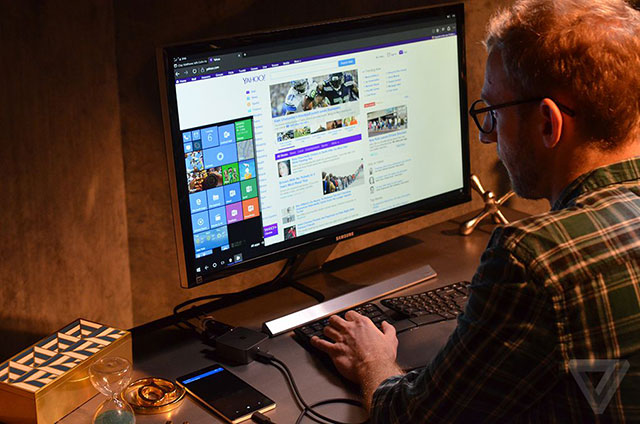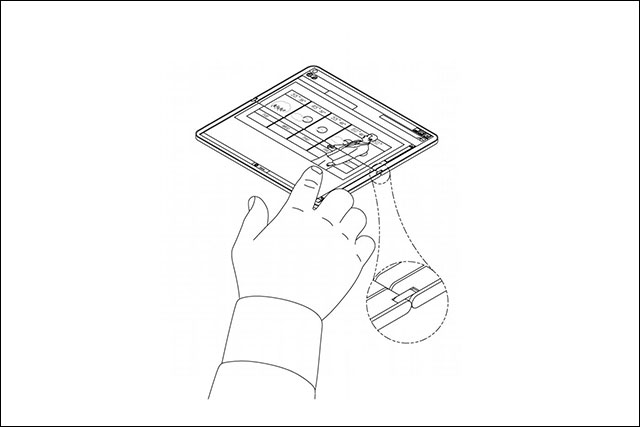Microsoft's future is a smart mode on smart devices
Microsoft's promise to Windows 10 is always a version of the operating system running on every device. Despite seeing devices running Windows 10 like HoloLens, Xbox One or even phones, Microsoft still has differences on its own interfaces and software. This means that the Xbox's Home screen looks different from the Xbox app on Windows 10, and the mobile version of Windows 10 is like a separate Windows version.
A source close to Microsoft's Windows plans said the software giant is growing so Windows can adapt and run on a device with multiple modes. The example for this is Continuum on Windows 10 tablets and phones, allowing you to use your tablet or phone on the big screen. Existing modes don't usually have the features you would expect and the user interface is similar to what you are used to.

Use your phone on the big screen
Microsoft is creating Composable Shell (C-Shell) for its developers as well as for Universal Windows Apps application developers to take advantage of.Windows Central first mentioned C-Shell last year and it was like a modular version of Windows Shell, used for Start Menu and Notification Center.
Now, Microsoft builds and maintains many versions of Start Menu on different devices, but C-Shell's vision is to create a single Start Menu, automatically pull sizes on modes and devices. different.
The idea of using the mode is also quite relevant, if you look at the future plan of Surface. It is still rumored that Microsoft is creating a mysterious Surface Notepad device with a folding screen. The patent image shows that it is very similar to Courier's digital notepad idea, with hinges to make 2 screens.
- Microsoft explains why folding phones will be the next big innovation of technology
- Turns out the Surface Phone, Microsoft's folded phone looks like this
The patent also shows that the capability of Microsoft devices is more than just a notepad, a tablet and a laptop. Connect to the big screen, imagine how this device, called Andromeda, adapts to many modes. Microsoft CEO Satya Nadella previously promised that Microsoft's future "phone" would not look like a phone at all.
Windows' vision also includes the Xbox handheld game concept, a quiet desktop mode to work more efficiently, and a children's mode that acts like a tablet with a simple interface. . These modes will automatically scale on different devices, even unreleased devices.

Photo of the mysterious full of Microsoft
The idea here is that C-Shell will replace the traditional desktop on Windows, becoming the main shell on every device. That depends on whether the C-Shell is really adaptable, but Microsoft has also named their effort Polaris.
We have seen the first examples of how C-Shell will affect the Windows user interface, but have yet to see any new device that shows the importance of this project to Microsoft. In the next few months, this will change.
Microsoft plans to reveal Surface Hub 2 in the first half of 2018 and this will be Microsoft's first device to show C-Shell. Perhaps they will also reveal the mysterious Andromeda Surface this year and will lay the foundation for other PC makers to follow the direction of creating adaptive modes.
The current Surface Hub runs Windows 10 with its own custom shell. 2nd generation Surface Hub will show how Windows 10 is capable of changing itself on different screen sizes and devices. The initial changes may not be clear, but Microsoft's vision will lead to adaptive modes (like Surface) with different shapes and devices, not even exist.
See more:
- Microsoft Surface Hub, stories not to mention
- Microsoft Surface Hub, "tablet" used in meeting rooms
- Andromeda - Microsoft's new folding device hopes to open a new market
You should read it
- Andromeda - Microsoft's new folding device hopes to open a new market
- Microsoft confirmed it will have a Surface Phone
- Microsoft is developing a low-cost Surface computer running Windows 11 SE
- Surface Centaurus - Microsoft's new hope in the folding screen device market?
- Compare Microsoft Surface 3 and Surface Pro 3
- Microsoft fans sign a Surface Phone rescue application
 Microsoft is ready for a world farther than Windows
Microsoft is ready for a world farther than Windows What is a blockchain? How does blockchain work? Pros and cons of blockchain?
What is a blockchain? How does blockchain work? Pros and cons of blockchain? Apple surpassed Intel because Intel just sat there
Apple surpassed Intel because Intel just sat there Despite hardware inventions, Apple is still being pulled back by software
Despite hardware inventions, Apple is still being pulled back by software Microsoft people explain why Windows on the phone failed
Microsoft people explain why Windows on the phone failed Why does Microsoft's mobile future depend on eSIM?
Why does Microsoft's mobile future depend on eSIM?